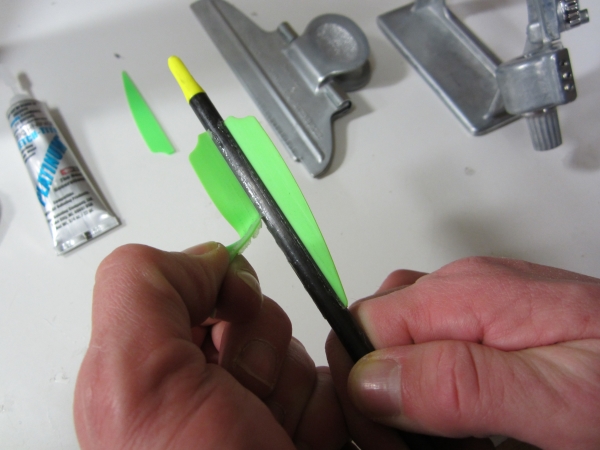Bows and arrows go together like bread and butter, but choosing the right arrow to go with your bow is somewhat more complicated than choosing butter over margarine. Shooting accurately is the result of three factors: the archer, the bow, and the arrow. Once the arrow matches the bow all that’s left is getting the archer up to speed.
Arrow selection may seem complicated at first, but with a little knowledge and the help of a good bow shop choosing the right arrow for your bow is actually pretty easy. Arrow flight is affected by several factors. The most important factor is that the weight of the arrow matches the minimum arrow weight recommendation of your bow manufacturer. Arrows weights are measured in grains, rather than grams or ounces. Most bows will specify that the arrows shot from that particular bow must have a minimum weight in grains. If the arrow is not heavy enough then the bow will dry fire since it is the same effect as not having an arrow nocked at all. Consult the owner’s manual that came with your bow or contact the manufacturer if you are unsure what minimum weight to use.
Accurate shooting time and time again is influenced heavily by the arrow that you choose. It is very important to choose arrows that are consistently manufactured with exactly the same weight (grains per inch) in every arrow. The closer each arrow is in weight the more likely they will be to fly the same. Maintaining consistent arrow weight goes beyond just the arrow shaft you select. Choose tips that all weigh the same and high quality fletches, vanes or feathers that are as close as possible to each other in weight.
When applying glue to inserts or vanes try to keep the amount applied consistent as well, as too much will increase arrow weight of that particular arrow. A digital scale capable of measuring in grains is very helpful and allows you to mix and match your tips to the arrow shafts to get the final arrow weight as consistent as possible among all your arrows.
Archers will need to know the draw weight and draw length of the bow they are choosing arrows for. Properly selected arrows must match the bow they will be shot from and are not interchangeable with other bows. Once your draw length is confirmed in inches, add 1” to get your correct arrow length for compound bows and 1” to 2” for recurve bows. Arrow length is measured from where the nock meets the arrow to the end of the insert where the tip attaches. An average arrow is 28” long, has a 100 grain field point on it, and two or three inch fletchings. Bow shops have special saws which will cut all arrows to exactly the same length based on your measurements. Do not use hack saws or toothed saws at home to cut your arrows, it will only damage them.
All major arrow manufacturers publish an arrow selection guide which helps archers choose which products best suit their needs. Arrows are most commonly made from carbon fiber or aluminum. Carbon arrows are usable over a wider range of draw weights and are great for target shooting. Aluminum is less durable, and needs to be more carefully selected based on draw weight and spine. Aluminum is generally cheaper than carbon but is better for hunting because carbon fiber arrows can shatter upon impact contaminating the meat with bits of nearly invisible fibers.

Arrow selection guides help to choose arrows with the correct spine for your draw weight. The spine of an arrow is how stiff that arrow is. As arrows are shot they bend slightly and if they bend too much or too little then they lose the ability to shoot consistently. If the spine of an arrow is too weak it will bend and possibly cause the arrow to break, if too stiff the arrow will shoot off centre. Spine can be adjusted once an arrow is cut by changing the tip weight, the length of the fletchings, or draw weight of the bow. Be sure to choose the appropriate arrow selection guide for target or hunting arrows.
Choosing the correct arrow for your bow is essential to accurate and safe shooting. Whether you are purchasing your first bow or fine tuning your arrows for the bow you have now, spend some time getting to know your draw weight and arrow spine. Once the arrows start hitting their mark you’ll be glad you did.
Copyright 2019 Mike Wilson





